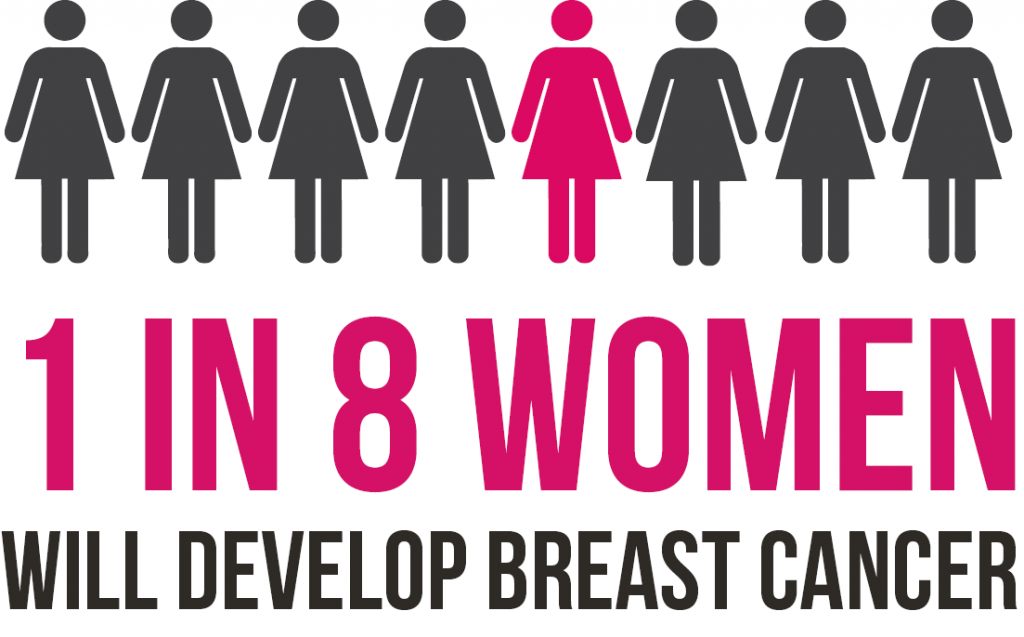Written by Isabella Peters (Accredited Exercise Physiologist)
Breast Cancer Facts and Statistics
Did You Know?
- 1 in 8 women in Australia will develop Breast Cancer
- There is a 90% survival rate however there is an increased likelihood of chronic disease post treatment.
- Breast cancer is the most common cancer in woman in Australia
- On average, 53 people will be diagnosed with breast cancer everyday.
What is Breast Cancer?
- Breast cancer is the abnormal growth of the cells lining the breast
- The cells grow uncontrollably and have the potential to spread to other parts of the body
Risk factors to developing breast cancer include:
- Increasing age
- Family history
- Exposure to female hormones
- Previous non cancer breast conditions
- Lifestyle risk factors such as being overweight, not enough physical activity and drinking alcohol.
Symptoms of Breast Cancer include:
- New lump
- Thickening in the breast under the arm
- Changes in the shape or size o the breast
- Dimpling of the skin of the breast
- Rash or red swollen breast.

Benefits of Exercise for Breast Cancer
Research has shown that exercise can:
- Help manage the side effects through treatment such as chemotherapy, radiotherapy and hormone therapy
- Increase energy levels/ manage fatigue
- Improve mood and quality of life
- Reduce the decline in muscle mass
- Decrease the risk of chronic disease post treatment such as diabetes, high blood pressure and cardiovascular disease
- Helps to circulate chemotherapy so it is more targeted to cancer site
- Maintain flexibility and balance
- Improve bone health
- Decrease cognitive impairment
- Manage chemotherapy-induced peripheral neuropathy
- Manage lymphedema
- Improve sleep quality
- Help you cope with stress, anxiety and depression
Exercise for Breast Cancer Recommendations
- Research from Edith Cowan University has found that exercising for 3hours + a week can reduce the risk of death by 50%.
- Even completing at least 1 hr per week has benefits and decreased risk of death.
- This is because exercise can reduce the risk of chronic disease such as diabetes, high blood pressure, cardiovascular disease and the re-occurrence of cancer
- Cardio toxicity post chemotherapy is very common due to damage to the heart muscle, however exercise can help reverse this
- It has also been found that people who exercise during and post cancer treatment have a better quality of life, improved mood, physical function, cardio respiratory fitness and reduced fatigue

How can Inspire Fitness help?
The team of Exercise Physiologists at Inspire Fitness can tailor a program to help manage Breast Cancer during or after treatment.
Our Exercise Physiology process involves:
- Initial assessment to understand other medical conditions, musculoskeletal injuries, goals and current treatment
- An exercise program individualised to your needs and ability
- One on one Exercise Physiology sessions or a gym membership with regular contact and reviews
- Continuous support, guidance and education
For more information ask one of our Exercise Physiology team members or contact Isabella on 9857 3007.
Summary:
- Exercise has many benefits for women experiencing breast cancer, both during and after treatment
- It is important to consult with an Exercise Physiologist to create a program to take into consideration side effects experienced and other co-morbidity
- Exercise is something which can help bring an aspect of control into someone’s life to help them feel better during a difficult time
- It may also be difficult to stay motivated and adherent to exercise during cancer treatment due to the fatigue, this is where an Exercise Physiologist can help to stay accountable
